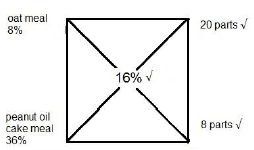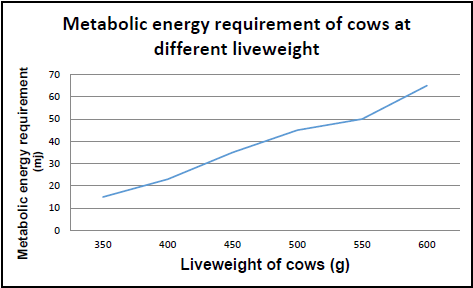Agricultural Sciences Paper 1 Grade 12 Memorandum - NSC Past Papers And Memos September 2020 Preparatory Examinations
Share via Whatsapp Join our WhatsApp Group Join our Telegram GroupMEMORANDUM
SECTION A
QUESTION 1
1.1
1.1.1 B
1.1.2 D
1.1.3 A
1.1.4 C
1.1.5 C
1.1.6 B
1.1.7 A
1.1.8 D
1.1.9 A
1.1.10 B (10 x 2) (20)
1.2
1.2.1 None
1.2.2 Both A and B
1.2.3 B only
1.2.4 A only
1.2.5 A only (10)
1.3
1.3.1 Maintenance ration
1.3.2 Vaccination/immunisation
1.3.3 Corpus luteum/yellow body
1.3.4 Ejaculation
1.3.5 Prolactin (10)
1.4
1.4.1 Essential amino acids
1.4.2 Contagious/infectious
1.4.3 Di-oestrus
1.4.4 Vas deferens
1.4.5 Prolapse (5)
TOTAL SECTION A: 45
SECTION B
QUESTION 2: ANIMAL NUTRITION
2.1 Alimentary canal of a farm animal
2.1.1 Indication of the age of animals
- Diagram A – Young animal/calf
- Diagram B – Adult animal (2)
2.1.2 Reason visible in diagram A and diagram B to justify the answer
Diagram A
- Presence of oesophageal groove
- Under-developed rumen/reticulum/omasum
- Fully developed abomasum (Any 1) (1)
Diagram B
- Rumination process/regurgitation
- Developed rumen/reticulum/omasum (Any 1) (1)
2.1.3 Identification of the processes
- Arrow A – Swallowing
- Arrow B – Regurgitation (2)
2.1.4 Explanation of the importance of regurgitation in digestion
- Regurgitation breaks down food into smaller particles to increase the surface area for digestion (2)
2.1.5 Difference of part F/caeca with that of a pig
- A pig has one caecum (1)
2.1.6 Identification of the letter
- D (1)
2.2 Mineral deficiency symptoms/supplementation and type of animal
Writing the missing information
- A – Calcium B – Iron
- C – Soil sods/injection
- D – Mineral lick (4)
2.3 Nutritional composition of feeds
2.3.1 Classification of feeds
- Concentrates (1)
2.3.2 TWO importance of feeding animals with concentrates
- Provides energy and protein requirements of an animal
- Necessary for fattening/finishing animals
- For the production of protein rich products
- To balance roughage
- Essential for growth (Any 2 x 1) (2)
2.3.3 Identification of the feed
- Wide nutritive ratio: Oat meal
- Narrow nutritive ratio: Peanut oilcake meal (2)
2.3.4 Calculation of the ratio of each feed to get the 16% DP
Ratio of oatmeal to peanut oilcake meal is 20 : 8 (4)
2.4
2.4.1 Line graph
Criteria/rubric/marking guideline
- Correct heading
- X-axis: Correctly calibrated and labelled (Live weight)
- Y-axis: Correctly calibrated and labelled (Metabolic energy requirement)
- Line graph
- Accuracy
- Correct units (Mj/g) (6 x 1) (6)
2.4.2 Deduction of the trend of metabolic requirement per live weight of a cow
- Metabolic energy requirement increases with the increase in live weight (2)
2.4.3 Calculation of the metabolic energy requirement of a cow with a live weight of 400 kg in 5 days
- Metabolic energy requirement x number of days
= 23 mJ/day x 5 days
= 115 mJ (2)
2.4.4 TWO importance of calculating energy value of a feed
- To determine animal’s diet
- To determine feeding standards
- To determine ration formulation (Any 2 x 1) (2)
QUESTION 3: ANIMAL PRODUCTION, PROTECTION AND CONTROL
3.1 Animal handling
3.1.1 Identification of the picture
- Picture C
- Picture D
- Picture B/C
- Picture A (4)
3.1.2 Indication of how the techniques are used
- Hobbling – Tying an animal with a device such as rope to hamper its ability to walk
- Immobilising – Put an electric current through their body to prohibit movement (2)
3.2 Factors to increase production
3.2.1 Indication of the production system
- Intensive production system (1)
3.2.2 Identification of the factors to increase production
- A – General enterprise management
- B – Breeding/reproduction
- C – Nutrition/feeding (3)
3.2.3 ONE factor to increase production which is not illustrated
- Environment (1)
3.2.4 Indication of the way farmers can address the environment
- Provision of housing/shelter (1)
3.3 Animal behaviour
3.3.1 Type of animal showing the behaviour
- A – Pigs B – Cattle
- C – Poultry
- D – Sheep (4)
3.3.2 THREE signs of pigs under stress
- Tail biting
- Ear biting
- Cannibalism
- Belly nibbling
- Snout rubbing (Any 3 x 1) (3)
3.4 Life cycle of a parasite
3.4.1 Classification of the parasite – External parasite
- Name – Blowfly (2)
3.4.2 Type of an animal susceptible to the parasite
- Wool sheep (1)
3.4.3 THREE stages of the life cycle of a parasite visible in the picture
- Larvae
- Pupae
- Adult (3 x 1) (3)
3.4.4 ONE precautionary measure to prevent the infestation by the parasite.
- Timing of shearing and crutching
- Clipping and cleaning of coat around the affected area
- Tail docking (Any 1 x 1) (1)
3.5 Animal diseases
3.5.1 Disease that can be transmitted by each of the following methods
- Transmitted by a bont tick – Heart water
- Transmitted by contaminated shearing equipment ─ Lumpy wool
- Ingesting eggs from feed contaminated with manure ─ Coccidiosis
- Transmitted through inhalation – Bovine tuberculosis (4)
3.5.2 Indication of a non-infectious disease
- Anaemia (1)
3.6 Indication of where the practice to control disease is the role of state or the farmer
3.6.1 Application of prescribed medication
- Farmer (1)
3.6.2 Importation of vaccines
- State (1)
3.6.3 Ensuring proper sanitation in a milking parlour
- Farmer (1)
3.6.4 Export and import bans
- State (1)
[35]
QUESTION 4: ANIMAL REPRODUCTION
4.1 Reproductive system
4.1.1 Identification of the animal with the reproductive system
- Cow (1)
4.1.2 TWO reasons visible to support the answer
- Presence of ovary
- Presence of fallopian tubes
- Presence of cervix
- Presence of the vagina (Any 2 x 1) (2)
4.1.3 Identification of the letter
- D
- C
- B (3)
4.1.4 TWO hormones produced in part labelled D/ovary
- Oestrogen
- Progesterone (2)
4.2 Infertility and sterility in bulls
4.2.1 Differentiation between sterility and infertility
- Sterility is the total loss of fertility and infertility is the temporal loss of fertility (2)
4.2.2 TWO congenital defects leading to sterility in bulls
- Hypoplasia
- Cryptorchidism
- Hermaphroditism
- Sperm defects (Any 2 x 1) (2)
4.2.3 TWO conditions that may cause inability of a bull to copulate
- Injuries to the penis
- Defective penis/corkscrew/too short
- Poorly developed hind legs
- Diseases causing inflammation of the joints (Any 2 x 1) (2)
4.3 Semen collection, dilution and storage
4.3.1 TWO requirements for semen collection
- Equipment must be sterile and readily available
- Bull must be clean during semen collection
- Collecting vial must be warmed to prevent damage to sperm cells caused by cold shock
- Area where semen is collected must be close to a laboratory
- Presence of a teaser bull (Any 2 x 1) (2)
4.3.2 Indication of the main purpose for diluting the semen
- To increase the volume of the semen (1)
4.3.3 TWO advantages of storing semen for the farmer
- Extending the productive life of superior bulls
- No need to keep and maintain expensive bulls (2)
4.4 Embryo Transplant/transfer
4.4.1 Re-arranging the steps to ensure successful embryo transfer
- Treatment of the cow with the gonadotropin hormone
- Semen is placed into the reproductive tract of a cow
- Foley catheter is used to recover the embryo
- Isolation and classification of the embryo
- Transfer of embryo to the uterus of a cow (5)
4.4.2 TWO types of cows involved in embryo transplant
- Donor
- Surrogate/recipient (2)
4.4.3 TWO disadvantages of the embryo transplant
- It is expensive
- Requires skill and experience
- Synchronisation of the recipient and donor is difficult
- Donor may not become pregnant
- Recipient cow could abort
- Labour intensive
- Time consuming
- Decreases genetic variability
- Greater management demand (Any 2 x 1) (2)
4.5 Normal lactation
4.5.1 Identification of the week when the cow reached her maximum production
- Week 8 (1)
4.5.2 TWO benefits of the milk produced within the first 3 days of parturition for the calf
- It provides antibodies to increase the calf’s resistance to diseases
- Supplies nutrients to the calf
- Necessary for the normal growth, functioning and maturation of the alimentary canal (Any 2 x 1) (2)
4.5.3 Explanation of the relationship between the percentage of butter fat content and quantity of milk produced
- When milk production reached its maximum during week 8 and decreased until week 42 butterfat content decreased at week 8 and
increased until week 42. (2)
4.5.4 Period in lactating cow after 42 weeks
- Dry period (1)
4.5.5 Importance of dry period
- It gives the glandular tissue of the udder time to recover. (1)
[35]
TOTAL SECTION B: 105
GRAND TOTAL: 150